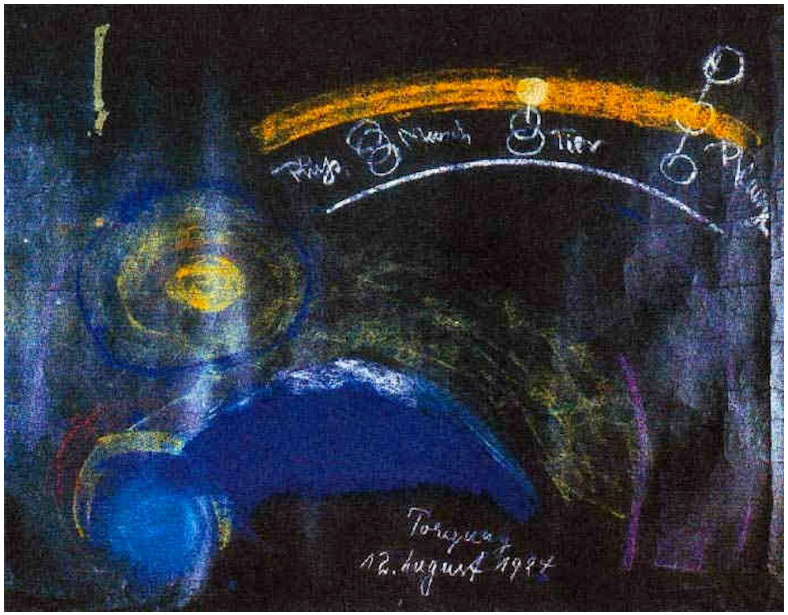
Is this art? It’s a drawing made by Austrian scholar and mystic Rudolf Steiner, who traveled Europe between 1919 and 1924 giving more than 5,000 lectures on “spiritual science,” art, medicine, agriculture, and economics. During the lectures Steiner would draw on the blackboard, and in 1919 his colleague Emma Stolle, apparently realizing the drawings’ value, began placing sheets of black paper over the blackboards in order to capture them.
Steiner himself doesn’t seem to have intended the drawings as beautiful, only as vehicles to express his ideas. Here’s the point he was illustrating with the image above, from a lecture on Aug. 12, 1924:
You look at a plant and say to yourself: I am a being of which I see only a mirror image, an inessential reflection, while on Earth. The more I turn my gaze to the stars, the more I see the true being up there. Nature is revealed in its entirety only when I look up from the Earth to the stars, when I consider the Earth and the cosmos as one. Then I can look back to myself as a human being and say: that which in the plant reaches up to the heavens has been compressed (bunched together) into myself on Earth. As a human being, I carry the physical world, the soul world, and the spiritual world.
Piet Mondrian, Wassily Kandinsky, and Alexej von Jawlensky all attended Steiner’s lectures, though none of them left any written comment about the images he drew. But one museum director remarked that if Steiner’s drawings don’t fit within any current definition of art, then a definition must be devised to include them.
(Lawrence Rinder, ed., Knowledge of Higher Worlds: Rudolf Steiner’s Blackboard Drawings, 1997.)
